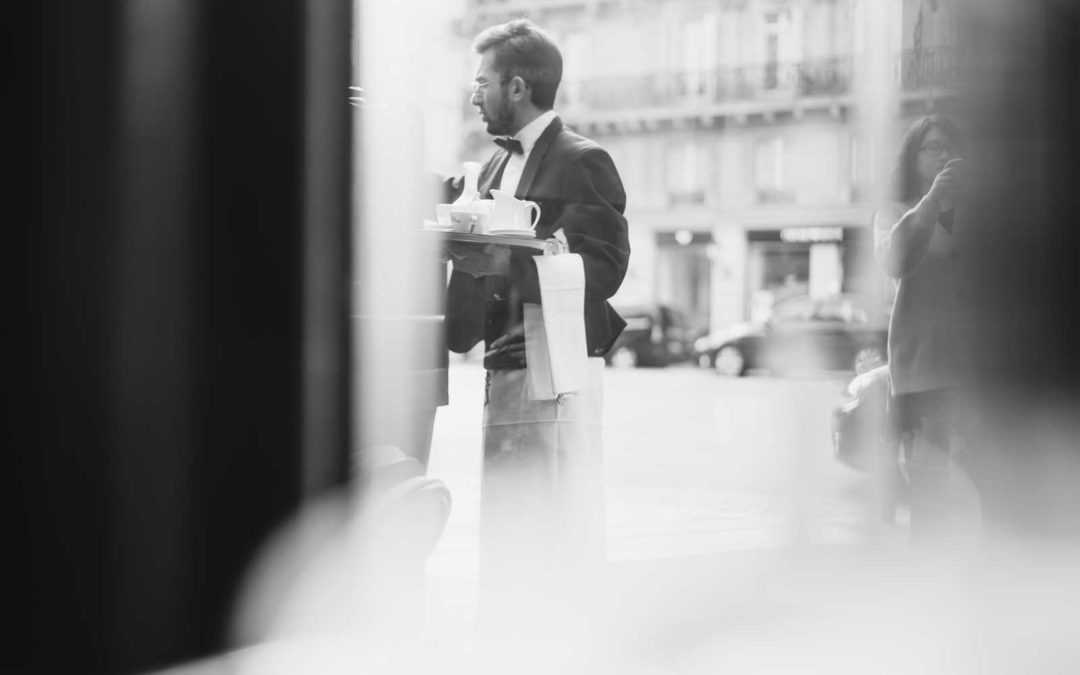No matter what sort of age group you employ, their experience level, or the type of restaurant; having a proper dress code can make a serious difference regarding the success your restaurant has. Because first impressions are so important in the restaurant game, it’s your responsibility as an owner or manager to make sure everyone is presentable. A dress code does not mean black tie with white serving napkins draped over a servers forearm, or suspenders and loads of buttons, but it can depending, so let’s look at where to begin.
First Thing Is Create A Dress Code
We should be considering not only clothing guidelines for a dress code, but also other aesthetics and grooming. Not only are their food safety regulations for those in the back of the house and the bar, keeping a few things clear for employees will improve the overall atmosphere and also reduce risk of cross contamination or patron complaints.
1. Hair Ties & Restraints – This is more for those in the back of the house dealing with food and cooking, such as chefs or sous chefs. Longer hair will require either hats, hair nets, beard nets if needed, and clothes suitable for covering body hair (arms, legs, etc.). Wait staff, hostesses, and bartenders really don’t require any restraints though servers and bussers can wear hair ties or scrunchies if need be.
2. Gloves and Hand Sanitation – First and foremost, whether serving, bar tending, or actually dealing with food; hand washing is absolutely necessary. Not only via health codes but also for cleanliness around food. Employees should wash their hands when arriving at work and also any time they use the bathrooms (following the law). Disposable gloves should be used where applicable for food preparation.
3. Jewelry – Jewelry should be removed (except for simple band rings), or simple non-dangling necklaces etc. Usually however, all jewelry should be removed. Different restaurants may have different policies regarding this, also regarding other piercings (eyebrows, nose, etc.). Jewelry is a notorious place germs like to thrive so be sure to set a standard across the board.
4. Fingernails – Nail polish is a no no, unless employees in question use disposable gloves (if they handle food). For servers, this is different however long artificial nails are a no no. They can cause problems when handling drinks, plates, and run the risk of even falling off in food. So this is a policy you should set straight away.
5. Personal Hygiene – this may seem obvious but is something too often overlooked. Whether handling food or not, properly showering and appearing presentable is important. Not only for the aesthetics of the restaurant but also for anyone in the back of the house dealing with food. Hair should be washed and combed where applicable, and deodorant should be worn by all employees. It’s important to require your employees to maintain a high standard of personal hygiene and shower and brush their teeth regularly.
6. Outer Clothing – if you use uniforms, they should be laundered and cleaned daily. If you don’t use set uniform outfits, clothing should be presentable and suitable for the restaurant environment. If its a biker bar, employees won’t need to wear formal attire however you should set some guidelines. Like no ripped pants, or no sleeveless shirts for men, or limiting cleavage, things like that.
Your Dress Code Is Established, Now What?
Implementing a dress code should not be a trouble causing task. Best thing to do is first and foremost, put it in writing. Have an open discussion with employees at your weekly meeting to hear what they have to say and if they feel it is fair or needs a few tweaks. Document these policies in an employee handbook (as well as disciplinary procedures), that can be reviewed as needed and also provided simply to new incoming employees. Possibly have employees sign an agreement if there are issues regarding the dress code.
Get Employees Uniforms They Can Enjoy
Fastest way to ensure that employees wear what you want them to is to buy them uniforms. Choose different colors as needed (that match or contrast the environment of the restaurant), and often dark colors are better as working in a restaurant can be a messy thing. This way, there is also no question about what should be worn at work, whether in the front or back of the house, you have more control. Or if you require employees to buy their own uniforms, share the cost with them, to ease the financial burden. If it’s a formal restaurant you’ll want to help with the cost or purchase the outfits outright. A more casual establishment may provide polo shirts, aprons, etc.
Your Dress Code Enforcement
Legal obligations may change the way you enforce a dress code or a change in the dress code. It’s the manager’s duty to make sure these changes are met straight away. Tell employees why adhering to the dress code is so important. Here are a few reasons why:
1. Branding – Uniforms add to the brand and keep everyone looking good and fresh.
2. Impressions – First impressions are incredibly important in the restaurant business. As often a first look and feel will give people a positive or negative feeling right from the get go. Fine dining restaurants will likely want employees with tattoos to keep them covered. Be sure to know local and federal anti-discrimination laws that may change what you can require, so be sure to keep that in mind.
3. Safety – Dress codes aren’t just to keep everyone looking good and uniform. It can also make a difference for food safety in the back of the house. Items like good grip shoes, long pants and aprons, chef coats and hats, etc.
No Cost Analysis of Your Menu
We will be glad to review your menu and point out things that may help your menu work better. Even if you are not using our menu papers or printing services. Email a PDF or JPEG of your menu to tom@menustore.com
If you need our full service of typesetting and printing your menus or just printing from your files,
visit MenuPaper.com or call 1-800-815-5342 to get started


